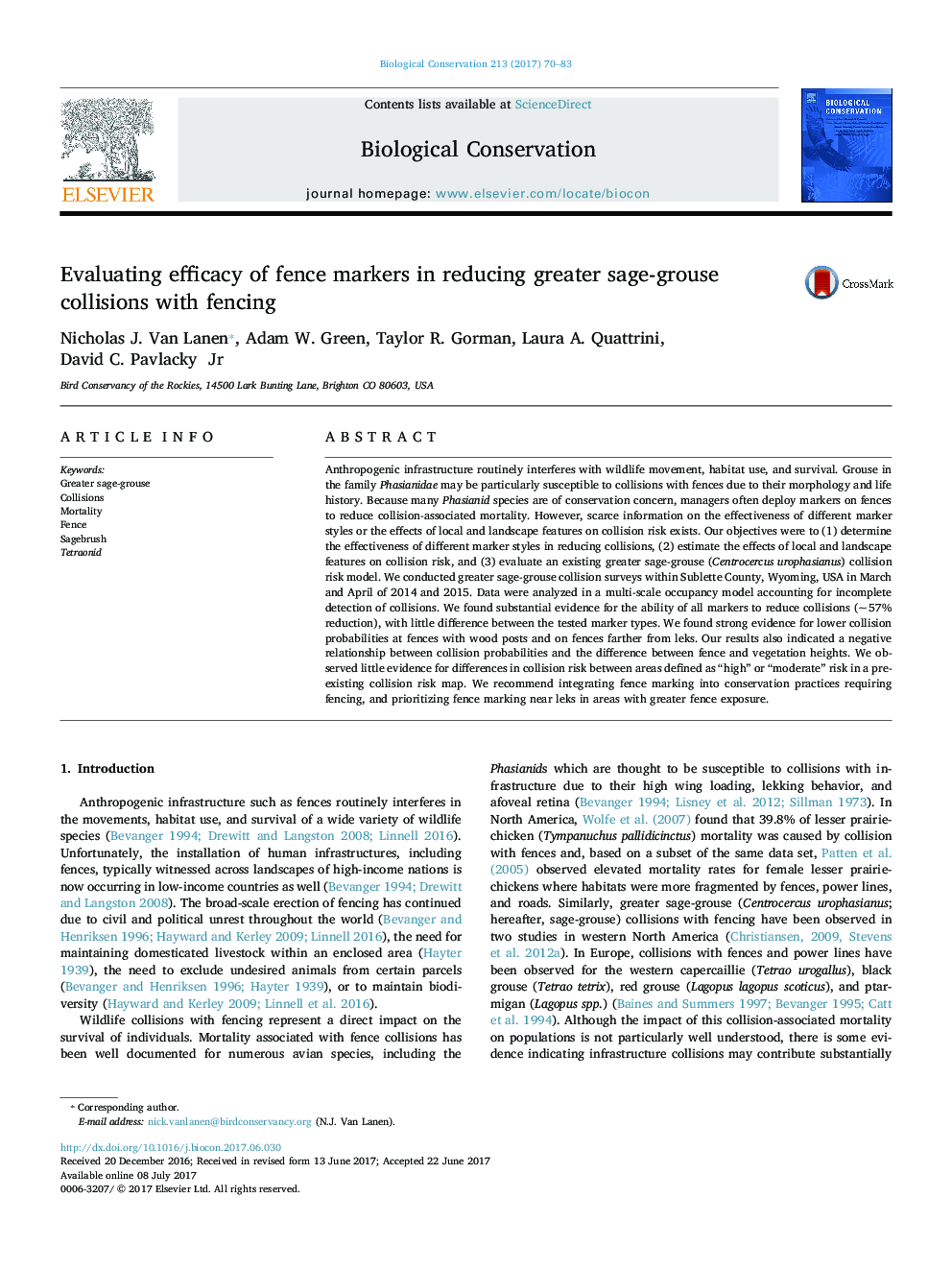| Article ID | Journal | Published Year | Pages | File Type |
|---|---|---|---|---|
| 5742984 | Biological Conservation | 2017 | 14 Pages |
Anthropogenic infrastructure routinely interferes with wildlife movement, habitat use, and survival. Grouse in the family Phasianidae may be particularly susceptible to collisions with fences due to their morphology and life history. Because many Phasianid species are of conservation concern, managers often deploy markers on fences to reduce collision-associated mortality. However, scarce information on the effectiveness of different marker styles or the effects of local and landscape features on collision risk exists. Our objectives were to (1) determine the effectiveness of different marker styles in reducing collisions, (2) estimate the effects of local and landscape features on collision risk, and (3) evaluate an existing greater sage-grouse (Centrocercus urophasianus) collision risk model. We conducted greater sage-grouse collision surveys within Sublette County, Wyoming, USA in March and April of 2014 and 2015. Data were analyzed in a multi-scale occupancy model accounting for incomplete detection of collisions. We found substantial evidence for the ability of all markers to reduce collisions (~Â 57% reduction), with little difference between the tested marker types. We found strong evidence for lower collision probabilities at fences with wood posts and on fences farther from leks. Our results also indicated a negative relationship between collision probabilities and the difference between fence and vegetation heights. We observed little evidence for differences in collision risk between areas defined as “high” or “moderate” risk in a pre-existing collision risk map. We recommend integrating fence marking into conservation practices requiring fencing, and prioritizing fence marking near leks in areas with greater fence exposure.
